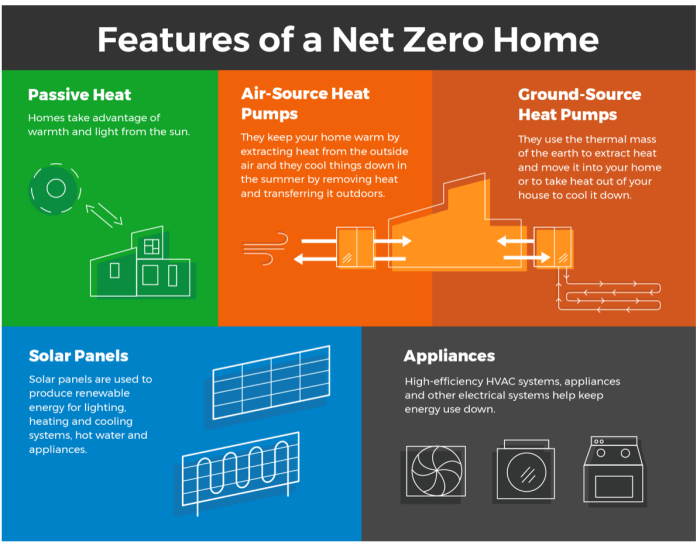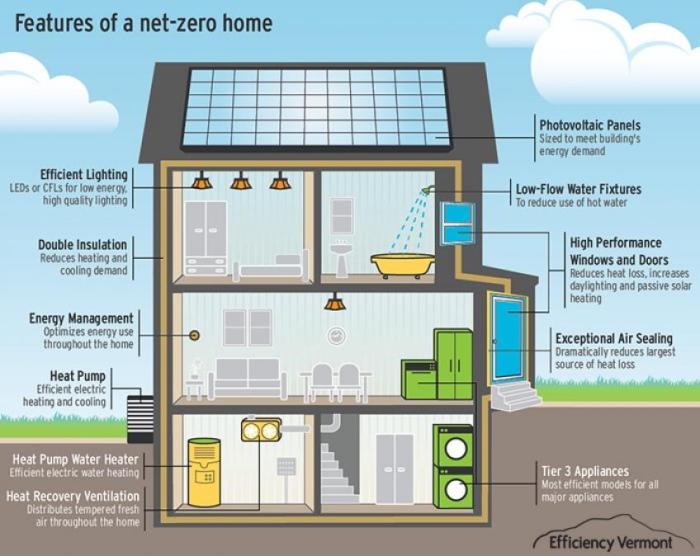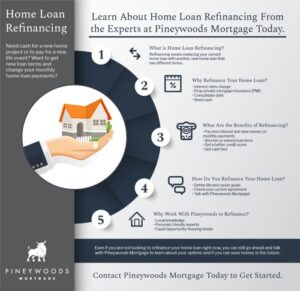
Net-zero energy homes are revolutionizing the way we think about sustainable living, creating a harmonious balance between comfort and environmental responsibility. These homes are designed to produce as much energy as they consume, making them a crucial step towards reducing our carbon footprint. With innovative technologies and efficient designs, net-zero energy homes not only benefit homeowners by lowering utility bills but also contribute to a healthier planet.
In a world increasingly concerned with climate change and resource conservation, the significance of net-zero energy homes cannot be overstated. They represent a forward-thinking approach to housing that prioritizes sustainability while also enhancing the quality of life for residents. By integrating renewable energy sources and energy-efficient practices, these homes are setting new standards in the real estate market.
Net-zero Energy Homes Overview
Net-zero energy homes (NZEH) represent a transformative approach to residential living, merging modern technology with sustainable practices to achieve energy efficiency. These homes generate as much energy as they consume over the course of a year, significantly reducing environmental impact and promoting a greener future for all.The defining feature of net-zero energy homes lies in their innovative design, which typically includes high levels of insulation, energy-efficient windows, and advanced heating and cooling systems.
Additionally, the integration of renewable energy sources, such as solar panels or wind turbines, plays a crucial role in reaching net-zero energy status. These characteristics distinguish NZEH from traditional homes, which often rely on fossil fuels and lack energy-efficient technologies.
Key Features of Net-zero Energy Homes
Understanding the features that define net-zero energy homes is essential for appreciating their significance in today’s energy-conscious society. These homes incorporate various elements that maximize energy efficiency and sustainability.
- High Insulation Standards: NZEH are built with superior insulation materials that maintain temperature, reducing the need for heating and cooling systems.
- Energy-efficient Appliances: These homes are designed with Energy Star-rated appliances that consume less power while delivering optimal performance.
- Smart Home Technology: Automated systems monitor and manage energy consumption, optimizing usage patterns and facilitating energy savings.
- Renewable Energy Systems: The use of solar panels, wind turbines, or geothermal systems allows homes to generate their own energy, contributing to net-zero status.
The benefits of net-zero energy homes extend beyond mere energy savings. They provide financial advantages, environmental protection, and increased comfort for occupants. Homeowners can experience lower utility bills and may even earn incentives through government programs aimed at promoting renewable energy and energy efficiency.
The transition to net-zero energy homes not only combats climate change but also fosters a sustainable living environment for future generations.
Moreover, these homes contribute to reducing greenhouse gas emissions, mitigating climate change’s adverse effects. By utilizing renewable energy sources and reducing overall energy consumption, NZEH play a vital role in creating a more sustainable world, aligning with global efforts to transition to cleaner energy solutions.
Real Estate and Net-zero Energy Homes
As the demand for sustainable living increases, net-zero energy homes are gaining traction in the real estate market. These homes not only provide environmental benefits but also cater to an evolving demographic seeking energy-efficient living spaces. Real estate agents play a crucial role in marketing these properties and educating potential buyers about their advantages, leading to a shift in market dynamics and property values.Real estate agents can effectively market net-zero energy homes by emphasizing their unique features and financial benefits.
Highlighting energy savings, reduced utility bills, and potential tax incentives can attract environmentally conscious buyers. Additionally, agents can leverage modern marketing strategies, such as virtual tours showcasing the home’s energy-efficient technologies and smart home integrations. Incorporating testimonials and case studies of satisfied homeowners can also enhance credibility and interest.
Marketing Strategies for Net-zero Energy Homes
When marketing net-zero energy homes, agents should consider the following strategies to effectively reach potential buyers and convey the value of these properties:
- Highlight Energy Efficiency: Focus on the energy-efficient systems and renewable energy sources used in the home, such as solar panels, geothermal heating, and high-performance insulation.
- Emphasize Cost Savings: Provide potential buyers with calculations of anticipated savings on energy bills over time, illustrating the financial benefits of investing in a net-zero home.
- Utilize Digital Marketing: Use social media platforms, real estate websites, and email newsletters to showcase high-quality images and videos of net-zero energy homes, highlighting their unique features.
- Educate Buyers: Host informational sessions or webinars focused on the benefits of net-zero homes, addressing common misconceptions and questions regarding sustainability.
- Network with Green Organizations: Building partnerships with sustainability-focused organizations can help agents expand their reach and credibility in the green housing market.
The impact of net-zero energy homes on property values in the real estate market is increasingly positive. Properties that achieve net-zero status are often valued higher due to their lower operating costs and growing demand. Studies have indicated that homes equipped with energy-efficient features can appreciate at a rate exceeding the market average. The National Association of Realtors has reported that energy-efficient homes tend to sell faster, attracting buyers willing to invest in sustainable living.
Impact on Property Values
Understanding the impact of net-zero energy homes on property values is crucial for both buyers and sellers. Here are key points that illustrate this phenomenon:
- Increased Demand: As awareness of climate change and sustainability grows, buyers are increasingly seeking homes that align with their values, leading to higher demand for net-zero energy homes.
- Resale Value: Research has shown that homes designed with energy efficiency in mind often sell for a premium compared to traditional homes, positively affecting the resale value.
- Market Trends: Real estate markets are adapting to include more green certifications and energy-efficient ratings, which enhance property appeal and valuation.
- Economic Incentives: Local and federal incentives for energy-efficient homes can further elevate property values, making them attractive investments for homeowners.
- Long-term Investment: Buyers often view net-zero energy homes as a long-term investment, which can lead to higher willingness to pay compared to conventional properties.
Green real estate practices play a significant role in promoting net-zero energy homes. By adopting sustainable building practices, real estate professionals contribute to a healthier environment and increase the marketability of these homes. Agents can advocate for local policies that support renewable energy installations and energy efficiency improvements, helping to shape a landscape that is more favorable to net-zero energy homes.
Role of Green Real Estate Practices
Green real estate practices encompass a variety of strategies and initiatives that promote net-zero energy homes. The following points highlight their significance in the real estate sector:
- Building Certifications: Encourage properties to obtain green certifications, such as LEED or Energy Star, which can enhance market visibility and credibility.
- Collaboration with Builders: Work with builders who specialize in sustainable construction methods to ensure that new developments incorporate energy-efficient designs.
- Community Education: Engage with local communities to raise awareness about the benefits of net-zero energy homes and foster a demand for sustainable living options.
- Policy Advocacy: Support policies and initiatives that promote renewable energy use and sustainability within local and state governments.
- Integration of Technology: Promote the use of smart technologies that enhance energy efficiency and provide buyers with real-time monitoring of energy consumption.
Building and Buying Options
Building or purchasing a net-zero energy home is an exciting venture that not only contributes to sustainability but also enhances energy efficiency and reduces long-term costs. This section provides a comprehensive overview of the steps involved in constructing a new net-zero energy home, a checklist for potential buyers, and insights into financing options tailored for these eco-friendly residences.
Steps in Building a Net-Zero Energy Home
Constructing a net-zero energy home requires careful planning and execution, focusing on energy-efficient design and renewable energy integration. Below are the key steps involved in the building process:
- Site Selection: Choose a location that maximizes solar access and takes advantage of natural ventilation.
- Design Phase: Collaborate with architects and builders who specialize in energy-efficient designs. Consider features such as passive solar heating, natural lighting, and high-performance insulation.
- Energy Modeling: Use software to simulate energy use and optimize the home’s design for minimal energy consumption.
- Building Materials: Select sustainable materials with a low environmental impact, such as reclaimed wood, recycled steel, and high-efficiency windows.
- Renewable Energy Systems: Incorporate solar panels, wind turbines, or geothermal heating systems to generate on-site energy.
- Construction: Follow meticulous building practices to ensure that the home is airtight and well-insulated, minimizing energy loss.
- Testing: Conduct a blower-door test to measure the airtightness of the building and make necessary adjustments.
- Final Inspection and Certification: Obtain necessary inspections and certifications, such as LEED or Energy Star, to validate the home’s energy performance.
Checklist for Evaluating Net-Zero Energy Homes
When considering the purchase of a net-zero energy home, prospective buyers should evaluate several critical aspects to ensure they make an informed decision. The checklist below serves as a guide to assess essential features and performance metrics:
- Energy Performance: Review the home’s energy rating, including its HERS (Home Energy Rating System) score.
- Renewable Energy Systems: Check for the presence and capacity of solar panels or other renewable energy sources.
- Insulation and Airtightness: Evaluate the quality of insulation and the results of any airtightness tests.
- Energy Bills: Request records of energy bills to analyze monthly energy costs compared to traditional homes.
- Building Materials: Investigate the sustainability and durability of the materials used in construction.
- Resale Value: Consider the market demand for net-zero energy homes in the area and their potential resale value.
Financing Options for Net-Zero Energy Homes
Financing a net-zero energy home can be approached through various avenues, each offering unique benefits tailored to eco-conscious buyers. Below are some financing options to consider:
- Green Mortgages: These loans often provide favorable terms for buyers purchasing energy-efficient homes, allowing them to borrow more based on the home’s energy savings.
- Energy Efficiency Financing: Programs may offer loans specifically for energy upgrades in existing homes, making it easier to transition to net-zero energy.
- Incentives and Rebates: Government programs at local, state, and federal levels may provide tax credits or rebates for renewable energy installations and energy-efficient home purchases.
- Home Equity Loans: Utilizing equity from an existing property can help fund the construction or purchase of a net-zero energy home.
- Personal Loans: For those without sufficient equity, personal loans can be a viable option for financing energy-efficient upgrades or purchasing a new home.
Commercial Properties and Net-zero Energy
The trend towards net-zero energy solutions is gaining momentum in the commercial construction sector, driven by rising energy costs, environmental concerns, and regulatory pressures. Businesses are increasingly recognizing the long-term benefits of investing in energy-efficient buildings that not only reduce operational costs but also improve sustainability profiles. As a result, there is a growing demand for commercial properties that achieve net-zero energy consumption.In the last decade, the shift towards net-zero energy in commercial properties has been marked by advancements in technology, innovative design practices, and a commitment to sustainability.
These buildings are designed to produce as much energy as they consume over a year, often through a combination of renewable energy sources, excellent insulation, and energy-efficient appliances. As organizations pursue corporate social responsibility goals, net-zero buildings are becoming integral to their operational strategies.
Trends in Commercial Construction
Several key trends are shaping the landscape of commercial construction towards net-zero energy solutions. These trends include:
- Increased Investment in Renewable Energy: Commercial properties are increasingly incorporating solar panels, wind turbines, and geothermal systems to generate on-site renewable energy.
- Adoption of Energy Management Systems: Advanced technology is now being utilized to monitor and optimize energy use, ensuring that buildings operate at peak efficiency.
- Focus on Sustainable Materials: The use of recycled and sustainable construction materials is becoming a standard practice, reducing the environmental impact associated with building projects.
- Government Incentives and Regulations: Many regions are offering tax incentives and rebates for buildings that meet net-zero standards, while stricter building codes promote energy efficiency.
- Enhanced Building Performance Standards: Organizations are increasingly seeking certifications like LEED or BREEAM that emphasize energy-efficient design and operational practices.
Examples of Successful Net-zero Energy Commercial Properties
Numerous commercial properties have successfully achieved net-zero energy status, serving as exemplars in the industry. For instance:
The Bullitt Center in Seattle, Washington, is often referred to as the “greenest commercial building in the world.” It features a roof covered with solar panels that generate more energy than the building uses annually, coupled with rainwater harvesting and composting toilets.
The Bosco Verticale (Vertical Forest) in Milan, Italy, is an innovative residential project with commercial spaces that incorporates extensive greenery and renewable energy solutions to minimize energy consumption.
These properties not only showcase cutting-edge design and technology but also highlight the benefits of reducing energy costs and enhancing occupant comfort.
Energy Efficiency Comparison
When comparing traditional commercial buildings to net-zero energy buildings, significant differences in energy efficiency become apparent. Traditional buildings typically rely on non-renewable energy sources and are often designed with minimal attention to energy consumption. As such, they can incur high operating costs and contribute to greater carbon emissions. In contrast, net-zero energy buildings employ strategies to maximize energy efficiency and minimize waste.
Key differences include:
- Energy Consumption: Traditional buildings often consume 30-40% more energy compared to net-zero buildings due to outdated systems and inefficient design.
- Operational Costs: Net-zero buildings tend to have lower utility costs, often saving 50% or more annually, which translates into significant financial benefits over time.
- Environmental Impact: Net-zero buildings contribute to significantly lower greenhouse gas emissions, aligning with global sustainability goals, whereas traditional buildings can increase a company’s carbon footprint.
- Occupant Satisfaction: Enhanced air quality and thermal comfort in net-zero buildings lead to improved employee productivity and well-being compared to traditional counterparts.
Real Estate Investing in Net-zero Energy Homes

Investing in net-zero energy homes is not just a trend; it’s a significant shift in how we perceive real estate and energy consumption. These homes, designed to produce as much energy as they consume, offer a unique investment opportunity for those looking to align their portfolios with sustainable practices while potentially reaping financial rewards.The potential return on investment (ROI) for net-zero energy homes can be substantial.
As energy prices continue to rise, the appeal of homes that significantly reduce or eliminate energy costs becomes increasingly attractive. Homebuyers are willing to pay a premium for energy-efficient properties, which can translate into higher resale values for investors. Moreover, many jurisdictions are introducing incentives, such as tax breaks and grants, aimed at promoting green construction, further enhancing the financial viability of these investments.
Return on Investment for Net-zero Energy Homes
Investors should closely evaluate several factors that can influence ROI when considering net-zero energy homes. A comprehensive understanding of these factors can guide better investment decisions.
- Energy Savings: Homes that significantly lower energy bills enable owners to save money over time, thereby increasing overall property value.
- Market Demand: There is a growing consumer preference for energy-efficient homes, which can lead to increased demand and potential for higher prices in the resale market.
- Government Incentives: Various state and federal programs provide financial incentives for investing in green technology, reducing the initial investment cost.
- Increased Property Value: Net-zero properties often appreciate at a faster rate due to their lower operational costs and broader market appeal.
- Long-term Sustainability: Investing in sustainable properties aligns with global movements towards renewable energy and climate change mitigation, thus appealing to environmentally conscious buyers.
Risks and Rewards of Investing in Green Real Estate
While investing in net-zero energy homes comes with promising rewards, it’s essential to consider the potential risks involved.
- Initial Costs: The upfront investment in technology and construction can be higher compared to traditional homes.
- Market Volatility: The real estate market can be unpredictable, and demand for green homes may fluctuate based on economic conditions.
- Technological Advancements: Rapid advancements in renewable energy technology could render existing systems obsolete, impacting property value.
- Location Factors: The effectiveness of net-zero features can vary greatly by location, influencing their attractiveness and overall energy production.
Key Considerations for Investors in Net-zero Energy Properties
Understanding the nuances of net-zero energy investments is critical for potential investors. Here are key factors to keep in mind:
- Location: Select areas with high demand for energy-efficient homes, as these properties are more likely to appreciate in value.
- Building Quality: Ensure that the construction meets rigorous energy standards to maximize efficiency and minimize long-term issues.
- Community Support: Invest in communities that prioritize sustainability, which can enhance the desirability of net-zero homes.
- Long-term Performance: Evaluate the projected energy performance of the home over time, including maintenance and operational costs.
- Regulatory Environment: Be aware of local regulations and incentives that can affect the feasibility and profitability of your investment.
Home Staging for Net-zero Energy Homes

Staging a net-zero energy home effectively is key to attracting eco-conscious buyers who value sustainability and efficiency. Thoughtful design strategies and a focus on energy-efficient features can create an inviting atmosphere that resonates with potential homeowners. By emphasizing the benefits of a net-zero lifestyle, sellers can differentiate their properties in a competitive market and appeal to a growing demographic committed to environmental responsibility.Design strategies for staging net-zero energy homes revolve around creating a space that feels both modern and environmentally friendly.
It’s essential to highlight the unique features of these homes, such as solar panels, high-efficiency appliances, and sustainable materials. A well-staged home can illustrate how these features contribute not only to lower energy bills but also to a healthier living environment.
Strategies for Highlighting Energy-Efficient Features
When preparing a net-zero energy home for showings, it’s crucial to showcase its energy-efficient features. Here are some effective tips:
- Emphasize Natural Light: Use window treatments that allow for maximum sunlight during the day, showcasing passive solar benefits.
- Showcase Technology: Ensure that energy-efficient appliances and smart home technology are visible and in working condition. Consider leaving manuals accessible to inform potential buyers about the efficiency ratings.
- Highlight Insulation: If possible, use clear, informative signage to explain the home’s insulation and energy management systems, as these are pivotal for maintaining a net-zero status.
- Create Green Spaces: Incorporate indoor plants and green decor to enhance air quality and show a commitment to sustainability.
- Use Eco-Friendly Staging Materials: Select furnishings made from recycled or sustainable materials to align with the home’s environmental ethos.
Marketing sustainability during the staging process is not just beneficial—it’s essential. Eco-conscious buyers are often looking for homes that not only save them money but also support their values of sustainability and environmental stewardship.
Importance of Marketing Sustainability
Promoting the sustainability aspect of a net-zero energy home can significantly influence buyer decisions. Effective marketing should communicate the long-term benefits of energy independence, reduced carbon footprint, and overall health benefits that come with living in a well-designed eco-friendly home. Consider these approaches when marketing sustainability:
- Utilize Digital Platforms: Leverage social media and real estate websites to share energy efficiency ratings, testimonials from previous owners, and the potential for energy savings.
- Host Green Open Houses: Organize open house events that showcase the home’s features while providing eco-friendly refreshments, emphasizing the lifestyle choice that comes with purchasing a net-zero home.
- Provide Informational Brochures: Create visually appealing brochures that Artikel the benefits of living in a net-zero energy home, including energy savings, comfort, and environmental impact.
- Engage with Local Eco-Communities: Collaborate with local sustainability groups to promote the home and tap into communities that value eco-friendly living.
By integrating these strategies, home sellers can not only enhance the attractiveness of their net-zero energy homes but also contribute to a broader movement towards sustainable living. The result is a win-win situation for both sellers and buyers, as the home becomes a beacon of innovation and environmental responsibility.
Challenges and Solutions
Building and buying net-zero energy homes comes with a unique set of challenges that can deter potential homeowners and builders. As the demand for these energy-efficient homes rises, understanding these obstacles and exploring innovative solutions becomes essential for the growth of the net-zero energy market. These challenges can range from high upfront costs to a lack of consumer knowledge and limited availability of materials.One of the primary challenges faced by builders and buyers of net-zero energy homes is the initial investment.
The cost of advanced technologies like solar panels, energy-efficient appliances, and superior insulation can be significant. This often leads to hesitation among potential buyers, despite the long-term savings on energy bills. Additionally, many consumers lack awareness of the benefits of net-zero energy homes, which can further limit demand.
Common Challenges in the Net-zero Energy Market
Several key challenges have been identified that impact the building and purchasing of net-zero energy homes. Understanding these can help in devising effective solutions.
- High Construction Costs: The advanced materials and technologies required for net-zero homes can drive up construction costs significantly, which may not be feasible for all buyers.
- Limited Knowledge Among Consumers: Many potential buyers are unaware of what net-zero energy means, its benefits, and the available financing options.
- Resource Availability: Access to skilled labor and sustainable building materials can be limited in certain regions, making it challenging to construct net-zero homes.
- Regulatory Challenges: Navigating local building codes and regulations can be complex, particularly when implementing innovative energy solutions.
- Financing Options: Limited financing options specifically for net-zero energy homes can restrict buyer accessibility, as conventional loans may not account for energy savings.
Innovative Solutions to Overcome Barriers
In response to these challenges, various innovative solutions have emerged that can assist builders and buyers in navigating the net-zero energy market. These solutions aim to simplify the process and increase accessibility.
- Government Incentives: Many governments offer tax credits, rebates, and other incentives to encourage the construction and purchase of net-zero homes, making them more affordable for buyers.
- Education and Awareness Campaigns: Initiatives aimed at educating potential homeowners about the benefits of net-zero energy can help shift perceptions and drive demand.
- Modular and Prefabricated Options: Utilizing modular construction methods can reduce costs and allow for quicker construction timelines while maintaining energy efficiency.
- Partnerships with Local Governments: Collaborating with local entities can simplify the regulatory process and ensure compliance with building codes while promoting net-zero initiatives.
- Innovative Financing Models: New financing products specifically tailored for net-zero energy homes are emerging, including energy-efficient mortgages that consider future energy savings in loan approvals.
Successful Case Studies of Net-zero Energy Homes
Several case studies illustrate how challenges in building and purchasing net-zero energy homes have been successfully addressed. These examples provide valuable insights into practical solutions and the potential for wider adoption.
- The Zero Energy Project: A community project in California faced high costs and regulatory hurdles but successfully implemented energy-efficient designs and secured government grants to offset initial expenses. The result is a cluster of homes that produce more energy than they consume, showcasing the viability of net-zero living.
- Living Homes: This company specializes in prefabricated homes that can be assembled quickly while adhering to net-zero standards. Their approach minimizes waste and reduces construction time, ultimately lowering costs while promoting sustainable living.
- Net-Zero Energy Home in New York: A homeowner in New York faced challenges related to financing and local regulations. By leveraging state incentives and working with a knowledgeable contractor, they managed to build a net-zero home that not only met their energy needs but also became a model for future projects in the area.
Closure
In conclusion, net-zero energy homes are more than just a trend; they are a necessary evolution in our approach to living sustainably. As we continue to face environmental challenges, investing in and promoting net-zero energy solutions will play a pivotal role in shaping a greener future. Whether building from scratch or purchasing an existing property, the benefits of net-zero energy homes extend beyond individual homeowners to the broader community and environment.
Query Resolution
What are the main advantages of living in a net-zero energy home?
The main advantages include lower energy bills, increased comfort, and a reduced environmental impact.
Do net-zero energy homes require special financing options?
While standard financing options are available, some lenders offer specialized products for energy-efficient homes.
Are there any government incentives for building or buying net-zero energy homes?
Yes, many local and federal programs provide tax credits, rebates, and incentives for energy-efficient home projects.
How do net-zero energy homes perform in extreme weather?
Net-zero energy homes are designed to withstand extreme weather conditions, often incorporating superior insulation and energy-efficient systems.
Can existing homes be retrofitted to meet net-zero energy standards?
Yes, many existing homes can be upgraded with energy-efficient technologies and renewable energy sources to achieve net-zero energy status.





